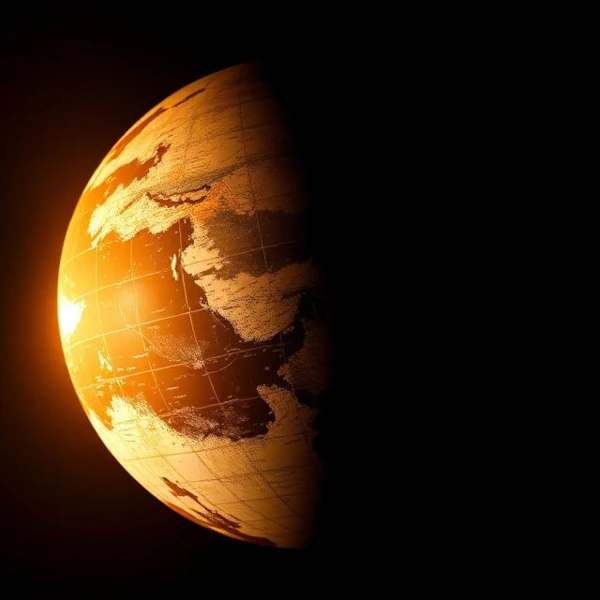
The equinoxes are the two points of the year when the Earth's equatorial plane intersects the plane of the ecliptic, the apparent path of the Sun in the sky. This occurs when the center of the solar disk is exactly located vertically above the Earth's equator. At this precise moment, the Sun culminates at 90° above the equator, resulting in an equal duration of day and night across the entire planet (within a few minutes due to atmospheric refraction).
The equinoxes (from the Latin aequinoctium, "equality between day and night") are two key moments of the year. These dates vary slightly each year due to the precession of the equinoxes, a phenomenon caused by the gyroscopic rotation of the Earth.
N.B.:
The precession of the equinoxes is a slow change in the orientation of the Earth's rotational axis, similar to the movement of a spinning top, which completes a full cycle in 25,800 years. The precession of the equinoxes results mainly from the combined gravitational attractions of the Sun and the Moon on the Earth's equatorial bulge.
Contrary to popular belief, the seasons are not caused by the variation in the distance between the Earth and the Sun, but by the tilt of the Earth's rotational axis, fixed at approximately 23.44° relative to the perpendicular to the plane of the ecliptic. This tilt means that, throughout the year, the northern and southern hemispheres receive different amounts of solar energy.
When the North Pole is tilted towards the Sun, the northern hemisphere experiences summer, with longer days and more direct sunlight, while the southern hemisphere experiences winter. Six months later, the situation reverses. Between these extremes, the equinoxes mark the moments of equal day/night duration and signal the beginnings of spring and autumn.
The alternation of the seasons is therefore a direct geometric consequence of the Earth's revolutionary movement combined with the obliquity of its axis. It has profound effects on biological, climatic, and societal systems, conditioning the cycles of vegetation, animal migrations, and the rhythm of agricultural civilizations.
| Year | March Equinox | September Equinox |
|---|---|---|
| 2023 | March 20, 21:24 UTC | September 23, 06:50 UTC |
| 2024 | March 20, 03:06 UTC | September 22, 12:44 UTC |
| 2025 | March 20, 09:01 UTC | September 22, 18:20 UTC |
| 2026 | March 20, 14:46 UTC | September 23, 00:06 UTC |
| 2027 | March 20, 20:25 UTC | September 23, 05:44 UTC |
| 2028 | March 20, 02:17 UTC | September 22, 11:28 UTC |
| 2029 | March 20, 08:01 UTC | September 22, 17:04 UTC |
| 2030 | March 20, 13:51 UTC | September 22, 22:47 UTC |
Source: Time and Date - Equinoxes, IMCCE - Observatoire de Paris.
The solstices represent the two annual extremes of the Sun's apparent path in the sky. On these dates:
Unlike the equinoxes where day and night are balanced, the solstices represent the peaks of light/darkness inequality of the year.
| Year | June Solstice | December Solstice |
|---|---|---|
| 2023 | June 21, 14:58 UTC | December 22, 03:27 UTC |
| 2024 | June 20, 20:51 UTC | December 21, 09:20 UTC |
| 2025 | June 21, 02:42 UTC | December 21, 15:02 UTC |
| 2026 | June 21, 08:24 UTC | December 21, 20:50 UTC |
| 2027 | June 21, 14:11 UTC | December 22, 02:42 UTC |
| 2028 | June 20, 19:55 UTC | December 21, 08:19 UTC |
| 2029 | June 21, 01:48 UTC | December 21, 14:14 UTC |
| 2030 | June 21, 07:31 UTC | December 21, 20:09 UTC |
Sources: IMCCE - Observatoire de Paris, Time and Date - Solstices.